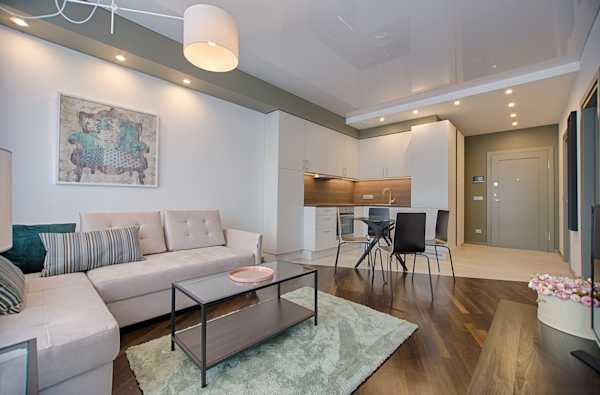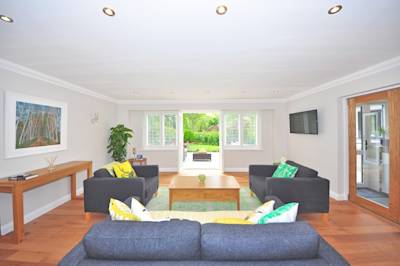
Is Home Staging Worth It?
11 Benefits of Staging a Property

11 Benefits of Staging a Property

Jacqueline Kyo Thomas
As a seller's agent, you have three options to sell the home:
If I were you, I’d opt for the third choice. There are only a few things that you can control in the selling process, and this is one of the most important. Through staging, you can create a winning impression of your listing.
In this post, we’ll discuss everything you need to know about staging, including how much it costs, why and how to do it. Let’s get to it.
You’ve heard of interior designing. Now meet interior marketing. In a nutshell, home staging is everything done to a home to prepare it to sell. Home staging is not simply adding and/ or rearranging furniture (although that’s a part of it). The purpose of home staging is to create a specific impression of a space. In order to do that, a home stager will need to understand what attracts the target home buyer. They will then assess the current state of the home and decide what the home needs to create the intended impression or mood.
In addition to furniture arrangement, a staged home may be cleaned, decluttered, painted, and repaired. Floors may be refinished, windows covered or unveiled, light sources added, and rooms completely redefined. The goal of home staging is to depersonalize and then neutralize a space so that a potential buyer can imagine themselves — and not the current owner — living there.
Because you have to invest in home staging before selling the home, there tends to be hesitation on whether or not it’s worth it. While it is pricey, it’s always worth it. Here’s why:
Staged homes sell quicker. According to various market studies, staged homes sell within 11 days on average. Most non-staged homes stay on the market for 60 to 90 days. This means that your staged home will sell 87% faster than a non-staged home. (These numbers will fluctuate based on your individual market.)
Staged homes sell for more. The longer a home sits on the market, the more price reductions you’ll need to make. If you’re able to sell a home within two weeks of listing thanks to staging, you’ll be able to get close to the listing, if not over!
Staged homes sell the dream. It may be easy for you to re-imagine the space, but you’re a real estate professional who’s used to thinking that way. For 90% of buyers, this is almost impossible to do. When confronted with an empty room or, even worse, someone else’s questionable decor choices, the buyer will be disillusioned. The buyer enters into the house hunting process with a dream. A staged home can match that dream.

Staged homes appeal to a wider buying pool. We’ve all seen listing nightmares— homes that somehow made it to the MLS with ugly or comical interior design choices. Listings like that might be good for a laugh, but most serious buyers would never tour that property — not because the property doesn’t have potential but because the buyer can’t see the potential. Home staging makes the space less polarizing and helps the buyer see what the property could be. Plus, it will also appeal to more buyers than one with very specific design choices.
Staged homes are decluttered homes. When staging a home, you have no other choice but to remove most (if not all) of the owner’s things. Cluttered homes seem small or dirty. But removing knick-knacks, collections, and random items from surfaces will make the room more visually appealing. It will ease the eye.
Staged homes are depersonalized. You want the buyer to be able to see themselves in the house, not the current owner. Do what you can to visually (and literally) remove the current owner from the scene. Staged homes often get rid of everything about the previous owner and show a space that’s marketed specifically to your target audience.
Staged homes motivate the seller to pack now. Some sellers wait until the last moment to finally detach from the home. This can be a nightmare for showing purposes. First, it’s hard on the seller because they must maintain the home at all times, and second, it’s hard on the home buyer because they won’t be able to see the true potential of the home, only the seller’s vision of it. By getting the seller out sooner, you’ll have a better opportunity to sell the home quicker.

Staged homes give a point of reference. A lot of homeowners think that empty rooms are better than furnished rooms. That’s actually not the case. Empty rooms tend to look smaller because there are no points of reference, i.e. furniture. Most house hunters don’t tour properties with a tape measure. These are also the ones who, when shown an empty house, won’t be able to visualize their sofa over here or their king-sized bed over there. This is why you need furniture in every important space. This gives the house hunter a reference point so that they can see the size and capacity of every room.
Staged homes stand out (in a good way). Most house hunters start their search for homes on the Internet. Your listing photos can sell you home before they even tour it. This is why you need to stage your home before listing, and then use photos of that staged home in your listing. A beautifully-designed space that accentuates the property’s features will attract and excite buyers.
Staged homes define each space. When you assign a function to each space, you make it easier for potential buyers to see the value of the home. Even if the new buyer completely changes the space, it’s still a good idea to show them what the space could be used for.
Staged homes look well-maintained. Most buyers want a “move-in” ready home and a staged home delivers on that. When a home has chipped paint, poor lighting, well-used and worn out furnishings, it tends to make the entire home feel like a fixer-upper. With a small investment, you can improve the cosmetic condition of the home and show that it’s a turnkey property.
The cost of staging a home depends on many factors, including location, size of home, and the amount of rooms you’d like staged.
On average, a 2,000 square foot home will cost $2,000 to stage three to five rooms. Stagers also charge a monthly furniture rental fee and impose a three-month minimum rental period (even if the staged home sales before the three month period is up).
For rearrangements, home stagers charge, on average, a flat $800.
In addition to the staging itself, you will also pay for the initial consultation. According to Home Advisor, expect to pay between $150 to $600 for a two-hour consultation. If you’re only looking for staging advice (instead of the actual staging service), book a consultation.
While it may seem prudent, don’t chase the lowest price. They’re low for a reason. However, most home stagers charge around the same amount, so choose the company based on its portfolio and reviews.
You have two options: Ask the homeowner to pay for the staging or pay for it yourself as part of your service.
Here’s the thing: Homeowners rarely want to invest more money into a property that they’re ready to list. But, if you share the compelling data for home staging and make a case for why you think it’s important, your argument should persuade them. This is especially true if you have anecdotal evidence from other sellers you’ve worked with in the past.
Alternatively, you can pay for it out of your own marketing budget. Hesitant? Don’t be. Remember that staged homes sell for more than non-staged homes. The money that you invest in staging will likely return back to you once you quickly sell the home. Plus, selling quickly will earn you word of mouth.
If you don’t want to do a full-on home staging, you can do virtual staging. As its name implies, virtual staging is all digital. A virtual stager adds furniture, curtains, and other decor elements to still photos of an empty space. Virtual staging is a low-cost solution that offers many of the same benefits as traditional staging, such as giving every space a purpose and providing a point of reference. That said, virtual staging can be disappointing for house hunters who arrive at the home and see a different reality than what they saw online.
Is home staging worth it? Absolutely! Whether you hire a professional or work with the seller to DIY the project, home staging can result in faster sales and more money.
Looking for other house selling tips? Check out these resources: